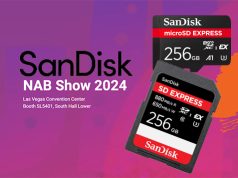I’m not here to say that everyone wants a digital SLR. Customers who look at the extra luggage required for interchangeable lenses and like accessories might rightly opt for a digicam, or integral lens camera. The host of buttons and massive tome of an instruction book that comes with a DSLR might also prove intimidating. All this, along with marketing in the right magazines and media outlets, will reinforce their decision to opt for a more familiar, less-buttoned (although not necessarily less featured) model. And why shouldn’t they? These sleek and stylish cameras now have viewing screens larger than iPods and automated exposure and focus systems that make them truly point and shoot. The dumbing down of the exterior belies the interior, where amazing technology has been brought to bear on delivering really nice shots in even difficult lighting conditions. While items such as “Smile Snap” or whatever you want to call it – the feature that takes a picture when the placid face of your subject turns to a grimace – are so much silliness and fluff, they are clever enough to appeal to gadget-oriented, family photographers. And for travelers, these shirt-pocket marvels could not be handier.
Yet, something is happening to the digicam market – sales are flat or declining, but digital camera sales overall are not going down. What’s happening is that more and more people seem to be opting for the digital SLR. There could be many reasons for this; it certainly has to do with mass marketing of the DSLR category, where the old economy of scale has brought prices to where they are feasible for more and more family photographers. This past holiday season the Nikon D40 was seen, in kit form, for under $500, including rebate. Similar pricing was seen on competitive DSLRs, with some post holiday price drops as well. And the cameras sold, according to sources, like hotcakes, despite the fact that even the humblest digicam these days outmatches the D40 in the megapixel race.
Info Overload
One reason for the ascendancy of the DSLR could be the blur caused by so many digicam models. While shopping in Target or similar stores I always wander over to the camera counter, where the tiny models are tethered to their posts attended by an eager but often overworked clerk. You look at the “spec cards” on the models and you are hard pressed to tell one from another. The price point breaks are based on some obscure “feature list” that often has more to do with fairly obscure, at least to the average buyer, bullet points than actual value. What’s the difference between a $149.95 and $169.95 digicam? Multi-face detection versus single face detection? A few extra megapixels, which the average consumer will never understand or use anyway? A 2.5 versus 3-inch screen?
But off to the side sit a few digital SLRs, looking more robust and picture-worthy. And the price tag, once hovering around the $1,000 mark, is now more likely to hover around the $500 mark. Obviously there’s a big leap between $149.95 and $500, but going from $349 (for a fully feature, major megapixel, big screen digicam) to $499 is much less of a stretch. And more people seem to be making that stretch.
I won’t pick up my old saw about shutter lag here again, at least to the lengths I have in the past, but I have always held that photographers just get too frustrated by it to want to repeat the experience they had with their first digicam, and opt for a DSLR to avoid just that fate. And this year, and certainly going forward, many buyers are second if not third, and fourth time digital camera purchasers. So, “once burned, your fault, twice burned, my fault” as the old saying goes.
Demand for Lenses
The emergence of the truly amateur class DSLR will create many changes in the marketplace. While not huge in physical size, they are clearly larger than their digicam cousins, thus will require more camera bags and packs, a market that is poised to jump in the coming year. There will also be more demand for consumer grade zoom lenses, which the independents, and even the camera makers are ready to serve. Look at some of the recent offerings from the likes of Nikon and Canon and you’ll see that consumer grade zooms are on their front line. Tamron, THK and Sigma have also come into the game, some later than others, but now they are full steam ahead.
One of tech matters that caught some of the independents off guard was the fact that the Nikon D40 and D40x, exemplars of the coming wave, have no internal motor to drive the AF mechanism in the lens, thus need Nikkor AF-S lenses. At first, indie lens makers had plenty of consumer grade Nikon lenses to offer, but lacked same in motor-in models. That’s changed now, and you’ll see more and more amateur lenses from all makers for all camera brands.
Storage Issues
While digicam customers need help with backing up and safely saving their images, the DSLR client might have even more of an interest and disposition to consider how to get it done right. There are many online services for this, but consumers might be rightfully shy in light of Yahoo and Sony closing their sites. Both gave plenty of warning, and made transition to other sites simple enough, but there have been times when some photographers have lost all their images when a service basically blew town and pulled the plug on everyone’s images, sort of like a cybernetics lab not delivering the ice.
That means that backup and storage will be the next big thing for digital camera users, and with DSLR customers representing more of the ranks my feeling is that they will come at it with a bit more acumen than the digicam crowd. Already companies such as Nikon have set the stage for branded online storage.
We even have a memory card that links to a home network and uploads images to the host computer, which automatically can send them on their way to sites like Shutterfly, FlickR etc. My question is: why can’t retailers capture the same wave, and have sites that automatically become the recipient of those images? And not just big box or wholesale houses – I mean on a local level. Perhaps the next generation of digital camera buyers represented by the DSLR buyer might consider having stores that sell them a camera and lens also serve as the repository of their images, for prints and Web sites as well.
This storage might also be linked in with home networks, where one should be able to call up any image made on any date of any person or group in any location (etc., etc.) all thanks to metadata imbedded in the original image. And once called up the image should be viewable on desktop or TV, and easily sent for prints to the local lab. Ah, the beauty of it all, if it would only be here now instead of us all having to go through all the poor connections and buggy generations. But some day soon we’ll get there if we keep pressing ahead.
Look at the online printing stats and you’ll see a big leap forward in the last six months, and more to come in ‘08. Lots of the increase came from the amateur market when the digital infrastructure became embraced wholeheartedly, lots more will come from the DSLR crowd, who, if the past is any indication, are “high burners” (sorry, an old film phrase meaning they take lots of shots) and generally make more prints than their snapshot brethren. Printing is a wonderful business and frankly a cash cow.
The point is that we should prepare ourselves for a new generation of digital photographer (yes, in digital terms a generation has become three years, and even that is stretching it), one who has come through some of the wars with us and who has often fought alone. He or she has a working knowledge of the medium, perhaps has never photographed with film, understands more about products and competition thanks to the Internet and has certain criteria for making purchasing decisions. Whether this is their third or fourth digital camera, they are coming to the DSLR market in droves and expect a level of image quality, and image services, that the industry must be ready to deliver. Once we do they will further embrace the products and services we have to offer, and we’ll see a nice burst of growth that, unfortunately, the digicam market could not by itself sustain. Squeezed by higher megapixel phones and other multimedia devices from the “bottom” and dropping prices on DSLRs from the top, the digicam won’t go away, but it may become a less crowded, and certainly slimmer niche than it had been in the past.





